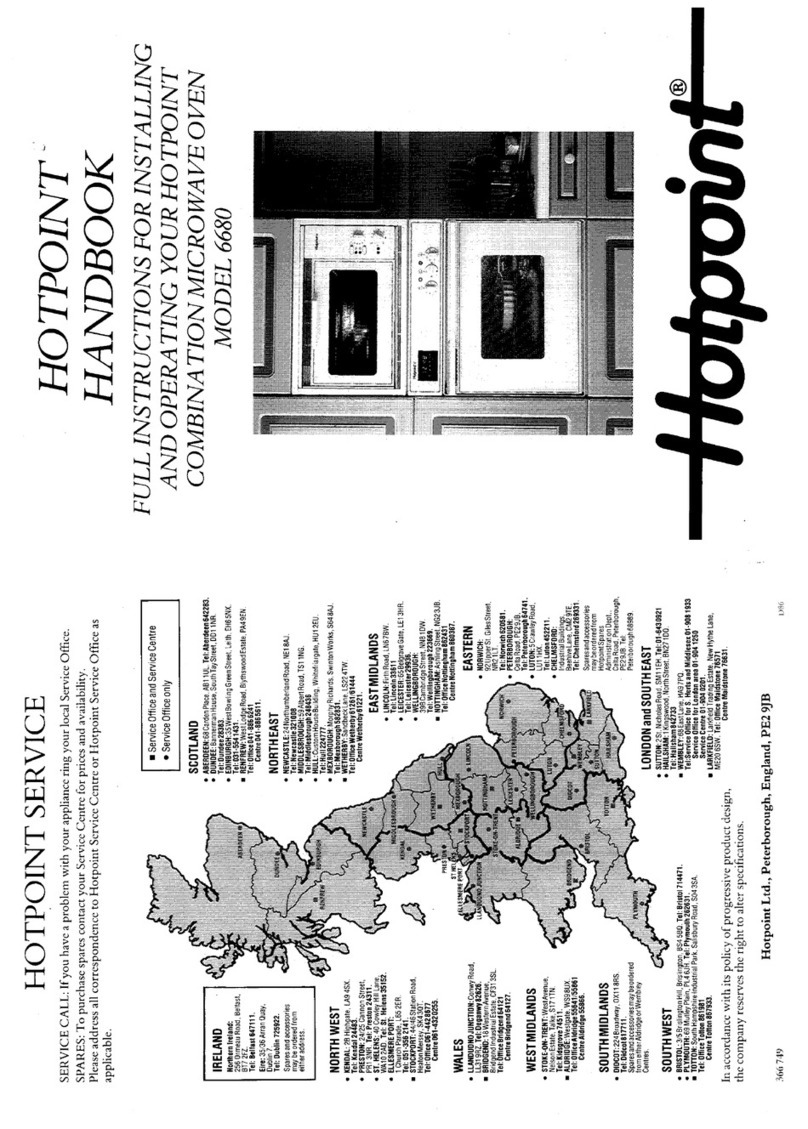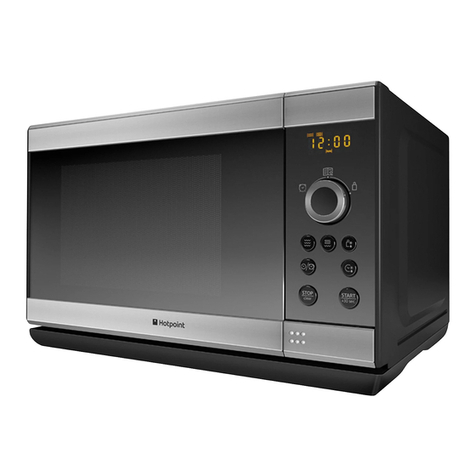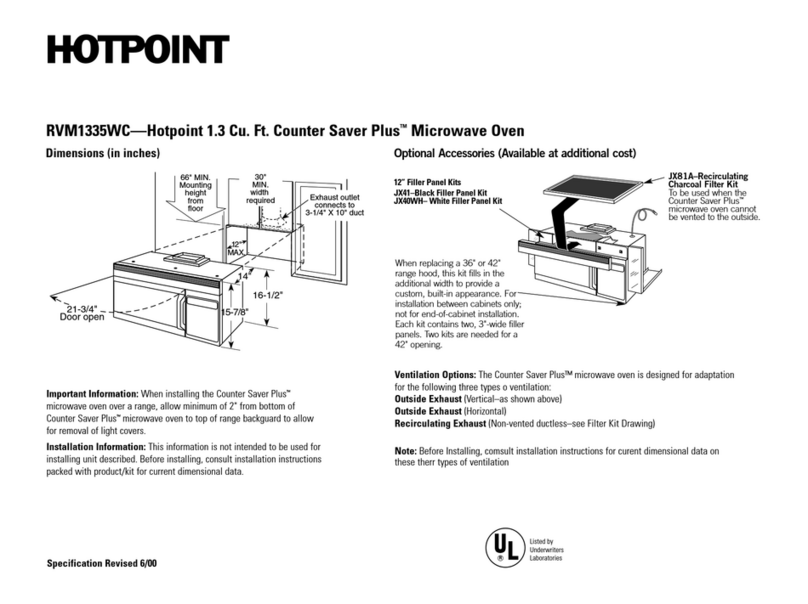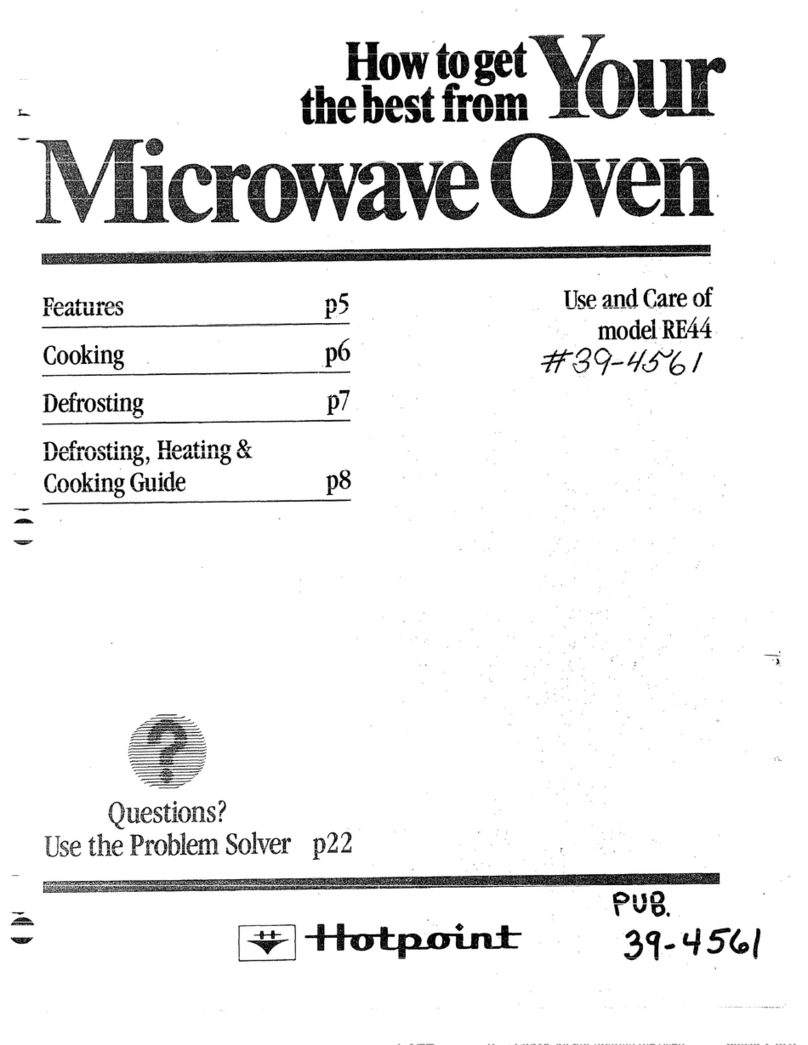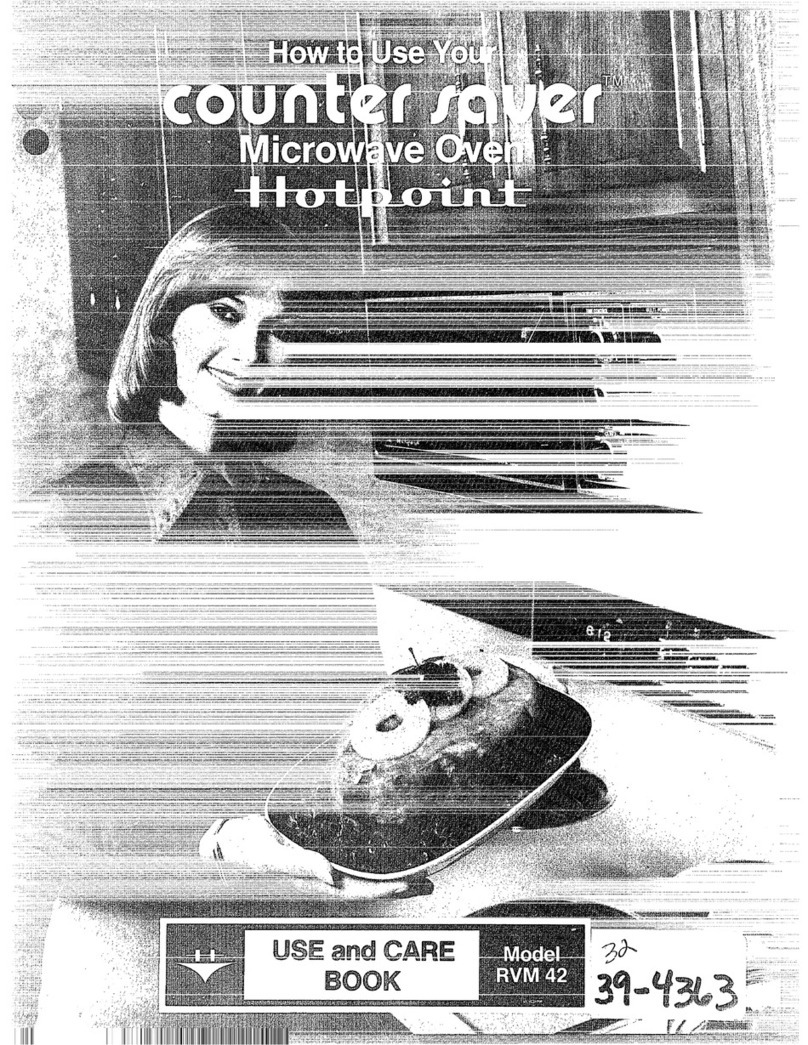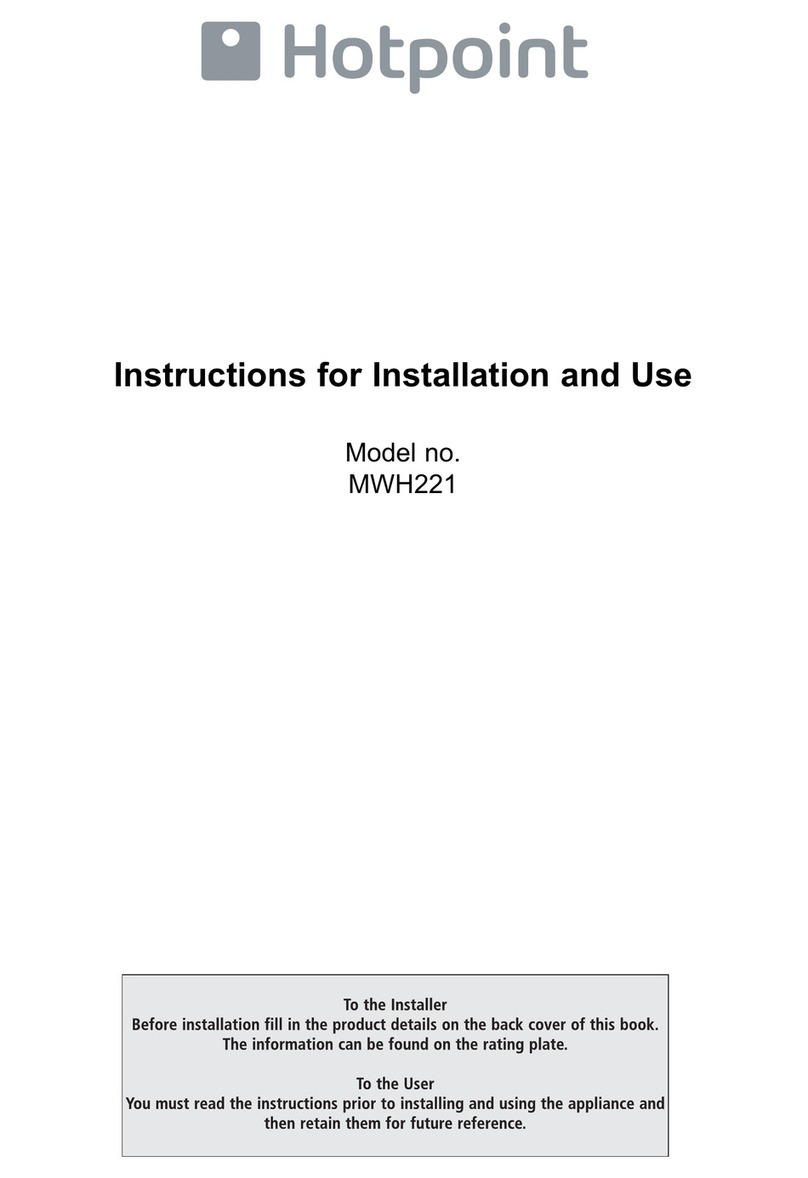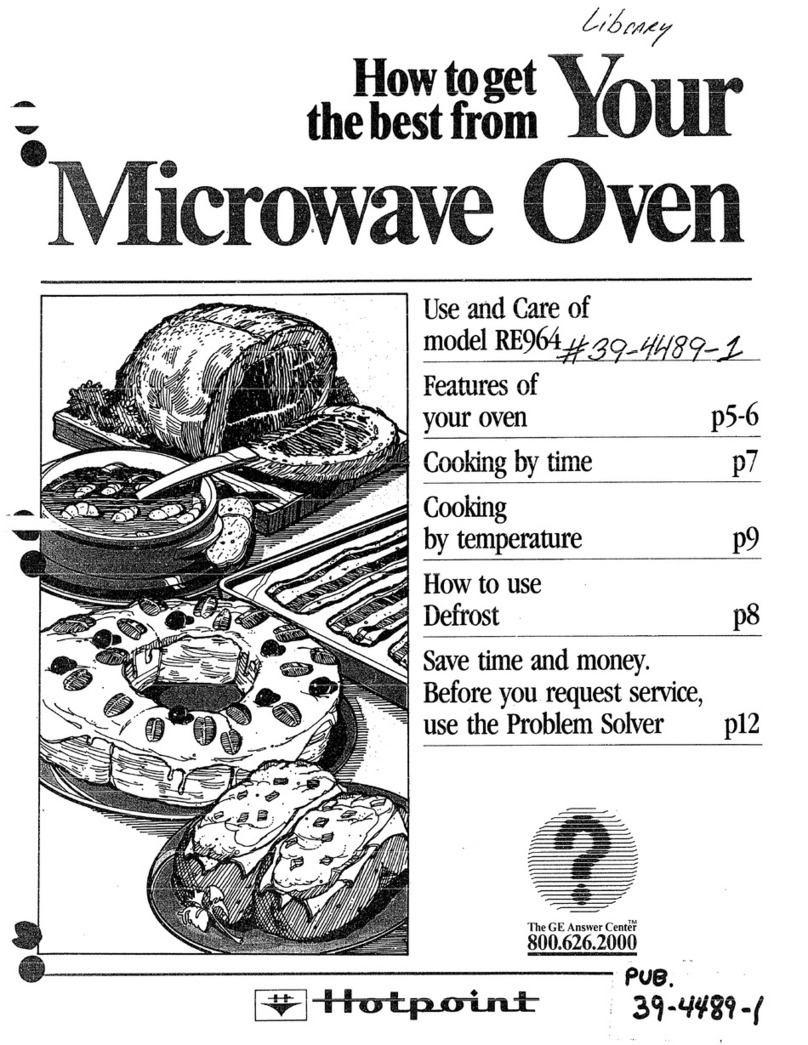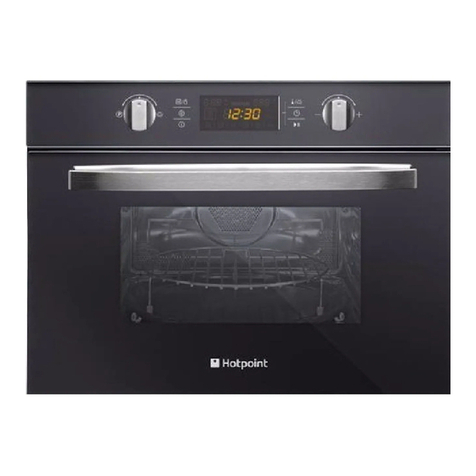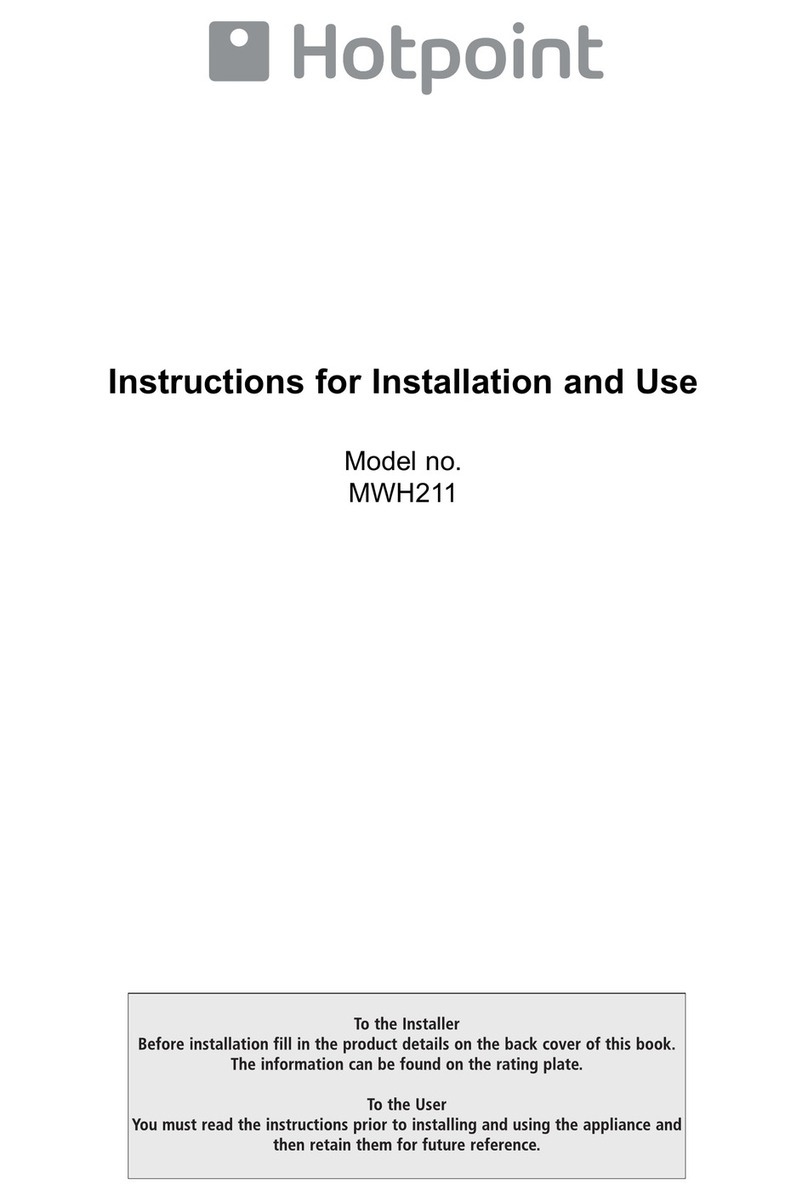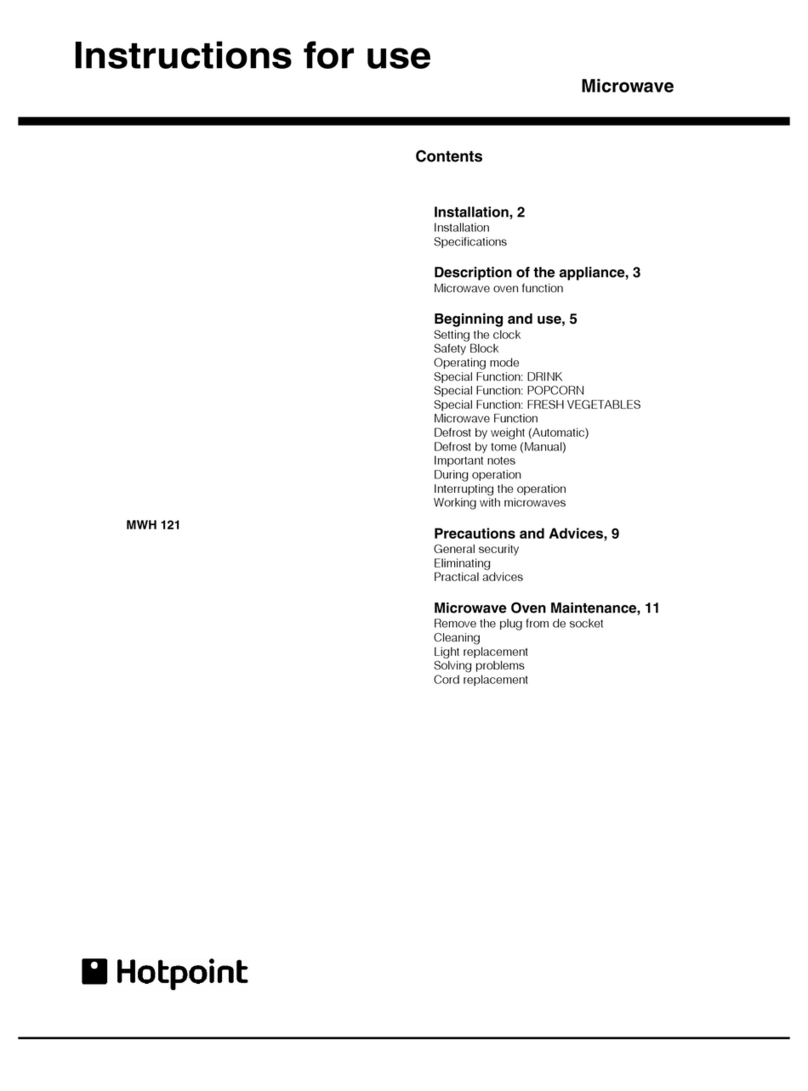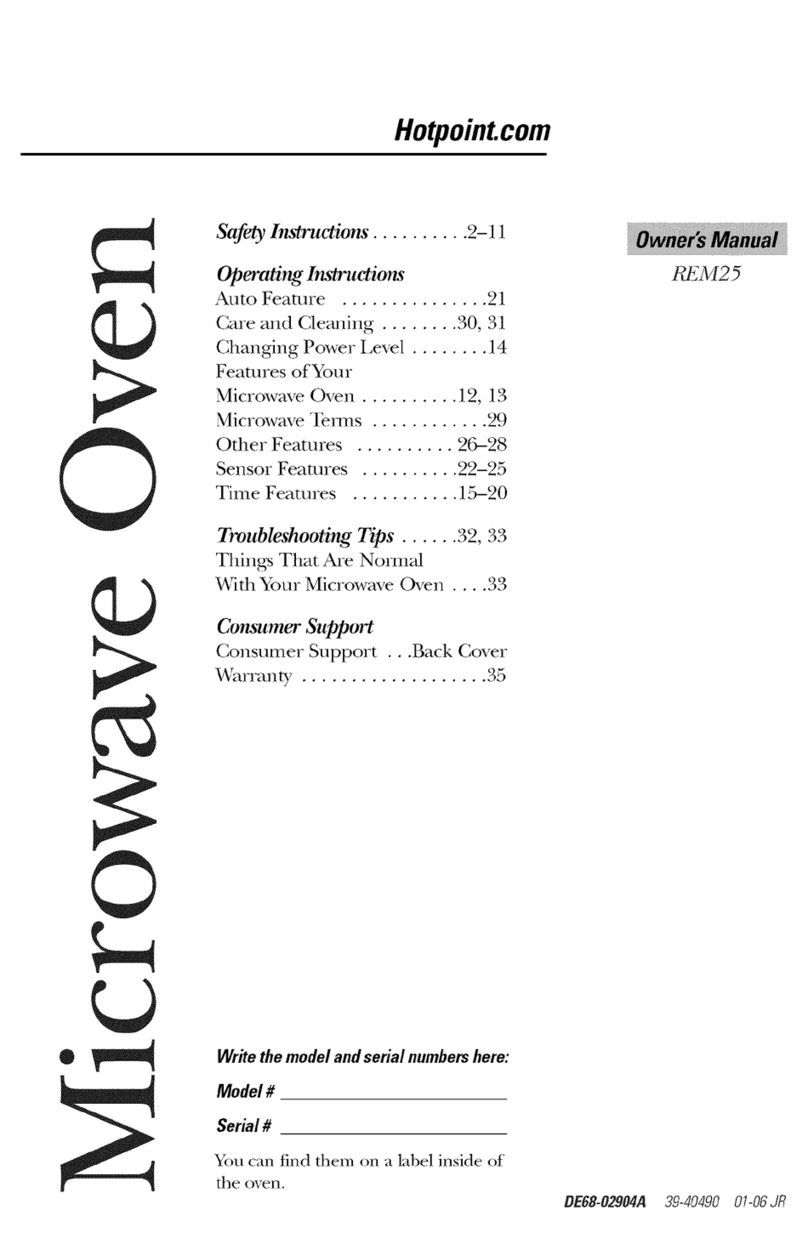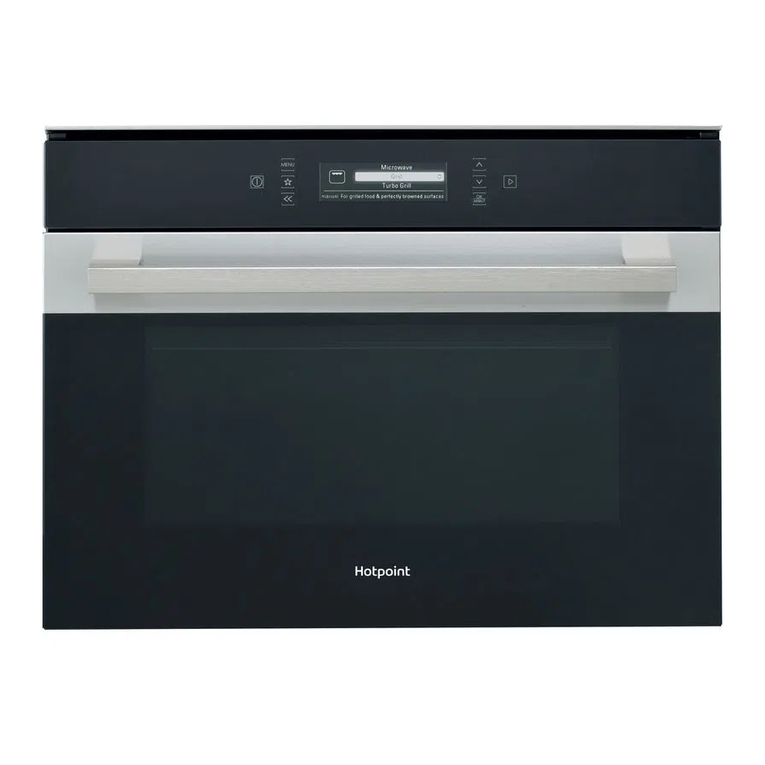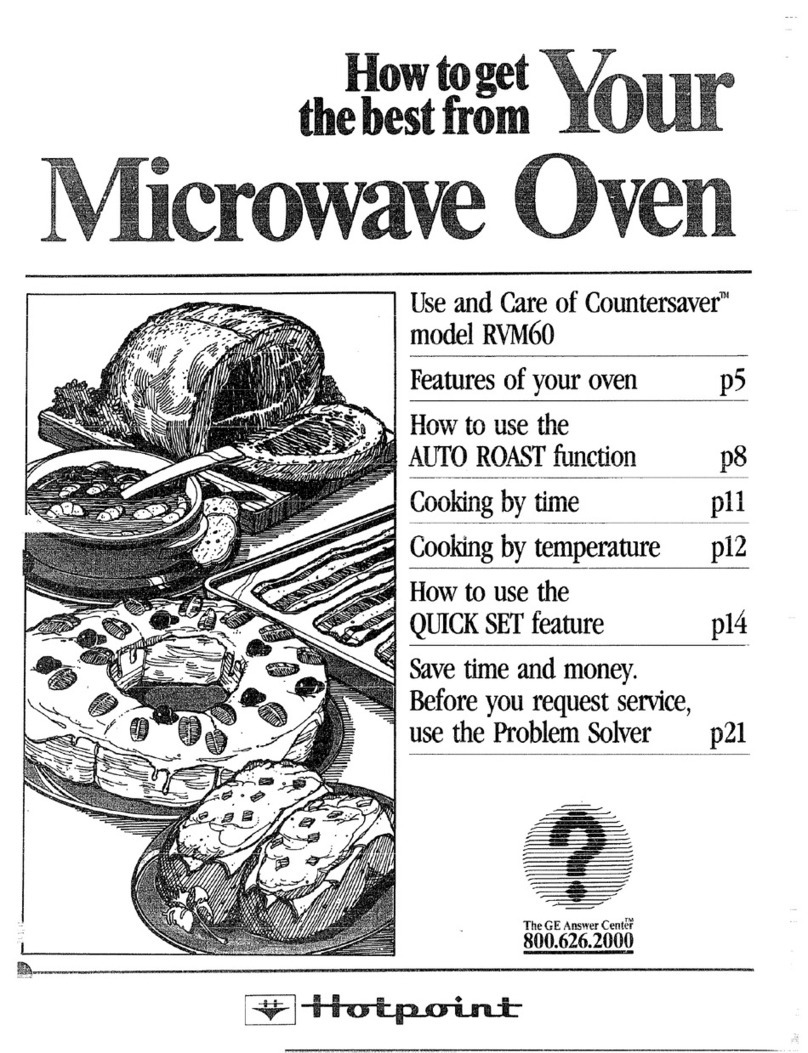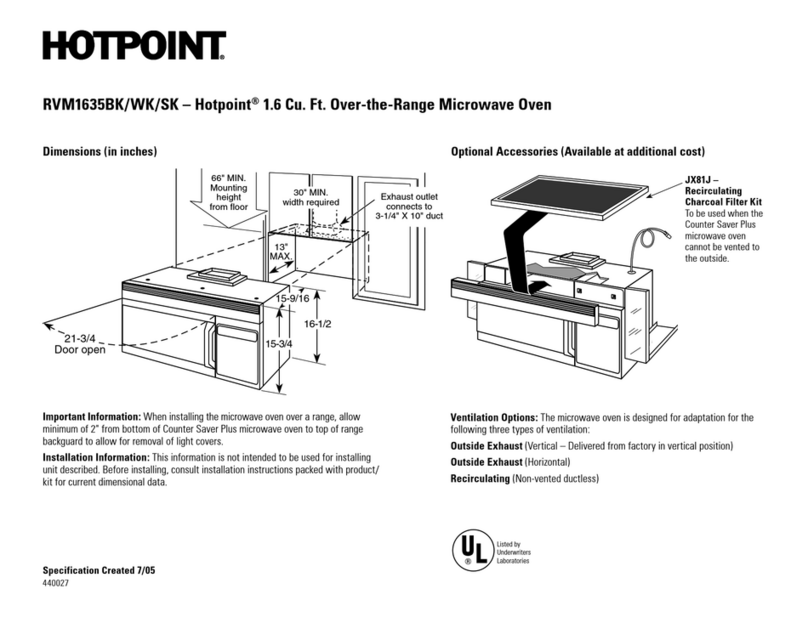!&lPORTANTSAFETYINSTRUCTIONS
Fkx3dallinstructionsbeforeusingthisappliance,
1. For personal safety the oven must
be properly grounded. Seeground-
ing instructionson page3of this
book. Forbest operation, plug this
appliance into its own electrical
outlet, to prevent flickering of lights,
blowing of fuse or tripping of circuit
breaker.
2. Use ofextensioncords.Because
of potential safety hazardsunder
certain conditions we strongly
recommend against the use of an
extension cord. However,if you still
elect to usean extension cord, it is
absolutely necessarythat it be a
UL listed 3-wire grounding type
appliance extension cord and that
the current carrying rating of the
cord in amperes be 15amperesor
greater. Such extension cords are
obtainable through Hotpoint ser-
vice. if youdo usean extension
cordwithyourmicrowaveoven,the
interior light may flicker and the
blower sound may vary when oven
is in use.
3. Be certainto placethefrontsur-
faceof thedoorthreeinchesor
more backfromthe countertop
edgeto avoidaccidentaltipping
ofthe appliancein normalusage.
4. Use metalonly asdirectedin
cookbook.Metal strips as used on
meat roasts are helpful in cooking
food when used asdirected. Metal
trays may be used for TV dinners.
However, when using metal in the
microwave oven, keepmetalat least
l-inch awayfromsidesof micro-
waveoven.
5. Do notoperatethe ovenwhile
emptyto avoiddarnageto theoven
andihe dangerof fire. If by acci-
dent the oven should run empty
aminute or two, no harm is done.
However, try to avoid operating the
oven empty at all times—it saves
energy and prolongs life of the
oven.
6. Cooking utensilsmaybecome
hotbecause of heat transferred
from the heatedfood. This is espe-
cially true if plastic wrap has been
covering the top and handles of the
utensil. Pot holders may be needed
to handle the utensil.
7. Sometimes,the ovenfloorcan
becometoo hotto touch.Be careful
touching the floor during and after
cooking.
8. Do notuseanythermometerin
food you are microwaving unless
that thermometer is designed or
recommended for usein the micro-
waveoven.
9. Removewiretwist-tieson paper
and plastic bags before placing in
oven.Twist-ties sometimes cause
bag to heat,and may cause fire.
10.Don’tdefrostfrozenbeverages
in narrow necked bottles especially
carbonated ones. Evenif the con-
tainer is opened, pressurecan build
up. This can causethe container to
burst, resulting in injury.
11.Don’tovercook.Excessiveover-
cookingdehydratespotatoes,and
maycausethemto catchfire
causingdamage.
12. if foodshouldeverignite:Keep
the ovendoorclosed.Turnoffthe
powerimmediately:Touch CLEAR/
OFF or disconnect power cord or
shut off power at the fuse circuit
breaker panel.
13.Boilingeggs(in andoutofshell)
isnot recommendedfor microwave
cooking. Pressurecan build up
inside egg yolk and may cause it
to burst, resulting in injury.
14. Foodswith unbrokenouter
“skin”such as potatoes, hot dogs
or sausages,tomatoes, apples,
chicken livers and other giblets, and
eggs (seeabove) should be pierced
to allow steamto escapeduring
cooking.
15.“Boilable”cookingpouchesand
tightlyclosedplasticbagsshould
be slit, pierced or vented asdirected
in Cookbook. If they are not, plastic
could burst during or immediately
after cooking, possibly resulting in
injury. Aiso, plastic storage con-
tainers should be at leastpartially
uncovered becausethey form atight
seal. When cooking with containers
tightly covered with plastic wrap,
remove covering carefully and direct
steam away from hands and face.
16.Do notpop popcornin your
microwaveovenunless in aspecial
microwave popcorn accessory or
unless you use popcorn labeled for
use in microwave ovens. Because
of the heat generated without these
precautions, the container could
catch fire.
17.PlasticLJtensils-Plasticutensils
designedfor microwave cooking
are very useful, but should be used
carefully. Even microwave plastic
may not be astolerant of over-
cooking conditions as are glassor
ceramic materials and may soften
or char if subjected to short periods
of overcooking. In longer exposures
to overcooking, the food and titen-
sils could ignite. Forthese reasons:
1) Use microwave plastics only
“and usethem” in strict compliance
with the utensil manufacturer’s
recommendations. 2) Do not sub-
ject empty utensils to microwaving.
3) Do not permit children to use
plastic utensils without complete
supervision.
18.Do not useyourmicrowave
ovento drynewspapers.If over-
heated, they can catch fire.
19.Whencookingporkfollow our
directions exactly and always cook
the meatto at least 170°. This
assuresthat, in the remote possi-
bility that trichina may be present in
the meat, it will be killed and meat
will be safe to eat.
20.Avoidheatingbabyfood in glass
jars evenwithout their lids espe-
cially meat and egg mixtures.
SAVETHESE
INSTRUCTIONS

